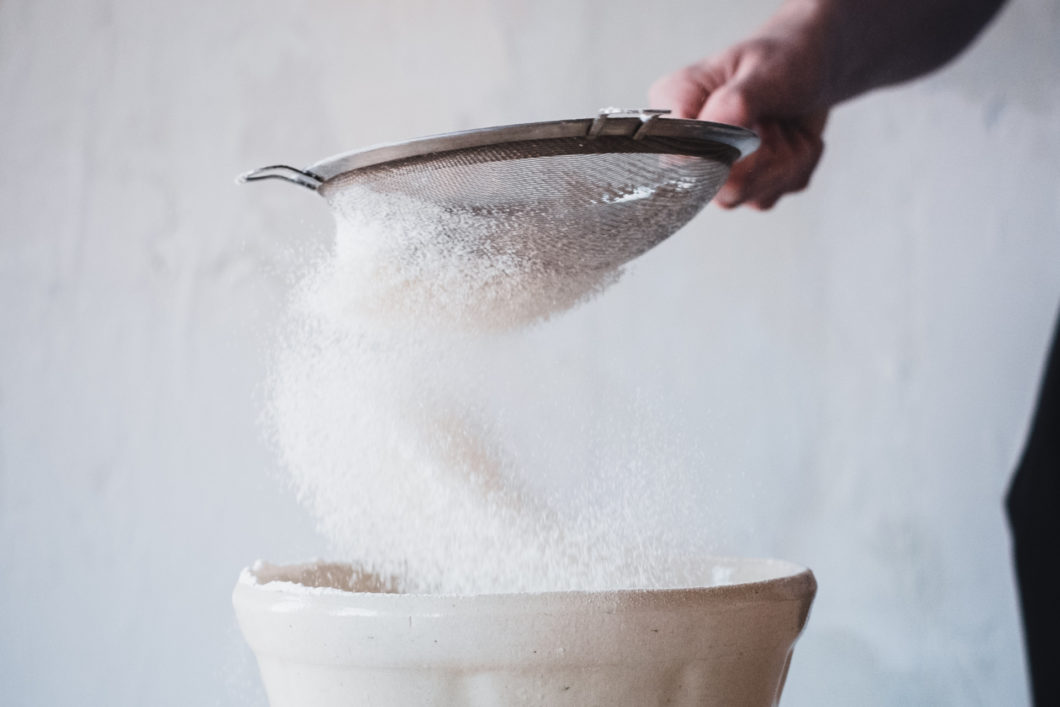Product development • Maltitol is a sugar alcohol with great sweetness and good functional properties, making it useful in many different foods. As with all sugar alcohols, it is important to be careful with the dosage to not upset the stomach. But what about the GI value?
Sugar reduction is exciting but complex work. In an article series, we will look at some ingredients that can be used to reduce sugar in foods. How can the ingredients be used and what should be considered? These are questions we should answer! In this article, we take a closer look at maltitol.
What is maltitol?
Maltitol is a sugar alcohol that can be extracted in various ways. For the large-scale industry, the starting point is to use starch from wheat, potatoes, corn, rice, cassava, or any other crop that is rich in starch. If you want to know more about maltitol and how it is extracted, you can read more about it in the article Maltitol – from seed to Eureba.
Sweet and tasty
Maltitol is a bulk sweetener that is close to sugar when it comes to sweetness. More specifically, maltitol has 80–90 per cent of the sweetness of sugar. And on top of that, maltitol offers a nice taste that is very similar to sugar. Therefore, maltitol is popular as a sweetener.

Fairly low in calories
Maltitol has 2.4 kcal per gram. There is, however, another sugar alcohol that is better in this respect, namely erythritol which has 0 kcal per gram. But things must be put into context. Ordinary sugar is 4 kcal per gram.
The combination of fine bulk properties and relatively high sweetness, while at the same time providing fewer calories than sugar, explains why this sugar alcohol is so popular in sugar reduction.
Glycemic index
Let’s be frank – there are sugar alcohols that perform better, to put it mildly. The GI value is perhaps the weakest point of maltitol. At least in relation to other sugar alcohols. Compared to sugar, maltitol has a GI value of just over half the amount found in sugar. Whether maltitol has a high or low GI simply depends on what we compare it to.
No cooling effect
The endothermic reaction that gives a cooling sensation in the mouth is negligible in maltitol unlike other sugar alcohols (eg erythritol). In addition, maltitol is kind to the teeth and does not cause caries.
What can you use it for?
Maltitol has many great properties that come well in hand when it comes to product development and sugar reduction. It is particularly suitable for dairy products where ice cream is a prime example. Other distinctive foods where maltitol comes into its own are chocolate, chewing gum and pastries.
Chocolate
There are many sugar alcohols that can fit in chocolate. But most also have some limitations. Many have only half the sugar sweetness.

An exception is xylitol, which certainly has a high sweetness but also a distinctive cooling effect.
The remaining one is maltitol. In addition to offering high sweetness, you also avoid the endothermic reaction. Maltitol also has a high melting point.
A high melting point increases the chance for the chocolate to stay in a stable state if it dissolves. A low melting point can result in graininess or lumps in the chocolate, which can lead to an unpleasant mouthfeel. With a high melting point, you instead get a controlled texture and melting properties that are similar to sugar.
Ice cream
In ice cream, you can replace sugar with maltitol. Maltitol molecules, in principle, weigh as much as sugar molecules. This means that sugar and maltitol have the same freezing point depression, which in turn gives ice cream made with maltitol a similar mouthfeel compared to conventional ice cream made with sugar.

Chewing gum
Maltitol also fits well in chewing gum. Especially considering that maltitol, just like other sugar alcohols, does not cause caries.
Another reason why maltitol fits well in, for example, chewing gum is that it has a low hygroscopic level. Hygroscopy is a substance’s ability to absorb moisture. Maltitol does not begin to absorb moisture until the humidity is greater than 80 per cent.
But why is this a good trait then?
Well, it does affect the durability of a product – all the way from the factory to the shelf in the grocery store. A chewing gum retains its texture and glossy appearance for a long time. In addition, you do not need to take into account a certain type of storage and handling of the food in specially adapted premises.
May upset your stomach
Just like with other sugar alcohols, you need to watch out for dosing. Otherwise, the stomach says away. If maltitol constitutes 10% by weight or more of the food, there must be a small warning text about the laxative effect.
Biscuits and cookies
Maltitol is applicable in cookies and pastries. It has a number of properties that are suitable for these applications. Again, it is the combination of good sweetness and bulk characteristics that is the success factor in baked goods.
Maltitol also has good humectant properties, which is important when it comes to pastries where you want to keep moisture contained and maintain the right level of juiciness. Even in biscuits, maltitol doesn’t make a fool of itself, offering just the right crispy texture.
But something maltitol does not offer is the Maillard reaction. This means, among other things, that you are missing out on that nice brown shade that we appreciate in pastries.
The question is whether you can combine maltitol with another ingredient to achieving the Maillard reaction. One solution could be to combine maltitol with polydextrose.
Legislation
It is possible to combine sugar with maltitol if maltitol also stands for other functions in the food in addition to adding sweetness. The starting point for using maltitol is that the calorie reduction should be at least 30 per cent, regardless of whether maltitol is used alone or in combination with other sugars.
High sweetness is not all when it comes to sugar reduction. But in cases where high sweetness is important, maltitol may need the help of a high-intensity sweetener to ensure high sweetness – but also to favour a decent calorie reduction.
What does Srdjan say?
We turn to Srdjan Solaja, food engineer and an expert in sugar reduction.
What is important to be aware of when considering maltitol?
– Whatever sugar alcohol you choose, you will always need to take into account the dosage, the laxative effect, and take care of consumers’ questions about why you use it and whether it is safe or not. When it comes to GI, it is important to note that almost all sugar alcohols raise blood sugar to a certain extent and should be consumed with caution. Maltitol is certainly no exception.
What is it like to work with maltitol?
– Maltitol is available in liquid and crystallized form, making it a perfect ingredient in a variety of applications. In some cases, you may need to add a high-intensity sweetener, but not always.
In crystallized form, maltitol is very similar to sugar. Therefore, you do not need to change processes or obtain additional equipment to work with it.
Srdjan’s three tips
- Remember to dose correctly, as there are people with sensitive stomachs
- Suitable for baking as maltitol – unlike many other sweeteners – provides the right stability and is heat resistant
- Reminds a lot of sugar and can replace sugar completely in some applications – but not always!
A helping hand
If you want help reducing sugar in your product, we can help you. Do not hesitate to contact us.
Please, share this article if you liked it.
[et_social_share]






